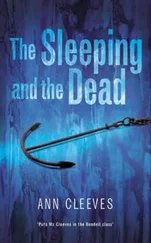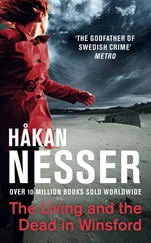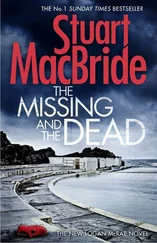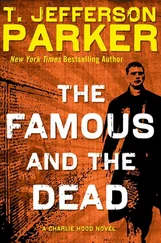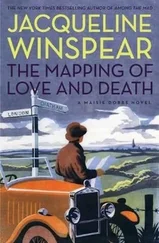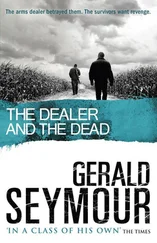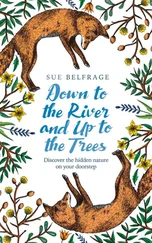Although every case was slightly different, there were common procedures. I’d be able to guess what specimens would be taken from someone suspected of an intravenous drug overdose, and they’d be different from those taken from someone who died in a nursing home and had a bedsore, for example. In the former, it would be necessary to send samples of body tissue to toxicology to establish exactly what levels of which substances were present in the tissues, and whether or not they led to the cause of death. In the latter, just like in the case of the anorexic dentist, a microbiology swab would be taken as a record of the sores and what organism they were specifically infected with. In his case, it took a couple of weeks for the pathologist to receive results from the lab, and that is fairly standard◦– unlike on TV, when results appear within the hour. The doctor was right: the cause of death had been septicaemia leading to septic shock due to microbes entering the blood from the decubitus ulcers.
Pathologists, too, are all different, and part of the skill of being an APT is getting to know each one well enough to pre-empt the equipment they’ll require. Some would be more fastidious than others, requiring many more specimens to support the conclusion they’d eventually reach. And more specimens meant more containers and labels, which would need to be pre-printed, ready to go on pot after pot of urine, blood, vitreous humor from the eye, bile, pus, tiny pieces of organs or bone and more. These small sections, taken for histology◦– the microscopic study of cells◦– were usually about a centimetre by a half and fitted neatly into plastic cases called histology cassettes. If I had a feeling the pathologist needed to take ‘histo’ then I’d have these cassettes out ready too, also printed with a unique case number, already with their lids open and standing to attention along the edge of the dissection board like little soldiers. Contrary to popular belief, it’s not very common for a pathologist to remove and keep whole organs. Modern techniques with microscopes mean that the smallest pieces of tissue are all that are required. The exception may be if there was extensive and unique damage to tissue and in that case the doctor would receive consent to keep the specimens for whichever length of time and whatever purpose was necessary.
With all this preparation, everything was out and ready to go in order for the post-mortem to run as smoothly as it possibly could.
* * *
The mantra one of my colleagues taught me was ‘the Five Ps’◦– Prior Preparation Prevents Poor Performance. It applies to everything in life, from cooking your beau a romantic meal to disembowelling humans. It also applies to embarking upon your chosen career. Most people don’t accidentally end up in their ideal vocations, and I couldn’t just fall into a job like anatomical pathology. I had to work at it and start preparing from an early age.
After the fairly restrictive years at my religious school, culminating in GCSEs, I went to college. I opted to study some Biology and Psychology but I also worked part-time as I wanted the freedom, money and time to mature a little. After working in my gap year, I did a Foundation Degree in Biological and Chemical Sciences, which was the equivalent of doing A-Levels in Biology, Chemistry, Physics and Maths in one year. This led me directly into a degree in Forensic and Biomolecular Sciences during which I’d not only learn more about the human body in detail but also the techniques used by forensic scientists. Modules I studied included toxicology, microbiology, cellular biology and forensic anthropology◦– the examination of skeletal and decomposed remains.
I thoroughly enjoyed being at university and working towards a goal but, having also had real work experience, I felt I wanted something more than simply sit-down lectures. I knew that reading books on forensics and autopsies was one thing and seeing images in class from an experienced pathologist or anthropologist was another, but I needed to know exactly how I would react in the presence of the most difficult cadavers; I needed the whole multi-sensory experience. If I could handle the worst, then I could handle anything. Looking at pictures of decomposing corpses is very different to smelling them and feeling the Rice Krispie pop of maggots beneath your feet.
Then fate struck when I met the eminent forensic pathologist Dr Colin Jameson, who was giving an evening lecture on Mass Grave Excavation in Srebrenica. [6] Yes, that was the sort of thing I did in my spare time: attended lectures on mass fatality protocol and capacity building in post-conflict regions rather than head out to the students’ union for Red Bull and vodka.
I commandeered his time to chat after the lecture◦– I was shy but what did I have to lose? In fact, he was very accommodating and I discovered he worked in several mortuaries, one of which was very near where I studied. He suggested I drop in one day to facilitate my university degree and that’s how I ended up on the steps of the Municipal Mortuary asking if I could volunteer one afternoon a week. I thought I’d have no chance but, perhaps because it was very uncommon for people to want to work in mortuaries then or perhaps because Dr Jameson had vouched for me as a student, the new manager there, Andrew, said yes. I was allocated some steel-toe-capped wellington boots of my very own and I entered the world of the mortuary, not really knowing what to expect. As much as I’d tried to research and prepare I was only really familiar with sensationalist ‘morgues’ from the media. Would there be organs in glass jars on shelves? Would there be stone slabs and weird electrical equipment, like something from a B-movie? Not at all◦– it was all very bright and clean.
Although the recent renovation of the mortuary meant everything was fairly modern, there was one throwback to the ‘creepy mortician’ stereotype of old: the current senior technician and lone staff member, an ageing Teddy boy. He was called Alfie and he was a real character, a relic from the days when everyone who worked in the death-business was male. He had stringy grey hair greased up into a Teddy-boy quiff and thick 1950s-style glasses which he wore non-ironically. He was originally from London and sounded just like Michael Caine, although the accent may have been slightly exaggerated.
The mortuary had been renovated because the local council had been restructured; it had been moved from the Public Health Department, which put it in the same category as Pest Control and Refuse Services (i.e. rats and bin bags), to the much more apt Cemeteries and Crematoria Services, run by the new head, Arnold. On seeing the mortuary and its staff, a decision was made by Arnold and his team that absolutely everything must go, starting immediately with Alfie’s co-worker, Keith, and then, soon after I arrived, Alfie himself. When I’d been there a while and heard tales of Alfie and Keith’s exploits I could understand why…
Because mortuaries used to come under the banner of Public Health, one worker used to use his ambiguous identification card to receive free meals at restaurants under the pretence that he was a health inspector there to grade them. Apparently, he also brought his dog to work every day and it was given free rein to wander between the office and dirty post-mortem areas at will… and then go back to his house. He kept porn in his locker at work; another worker, Samurai swords. They ate and smoked in the post-mortem room and wore their own clothes with nothing but an apron over the top◦– no scrubs, no disposable gowns, nothing. The whole set-up was a health, safety and ethical nightmare.
When I was asked to pop in and chat about volunteering it was mainly discussed with Andrew, a young, serious man who slightly resembled Beaker from Sesame Street with his glasses, strawberry blond hair and white shirts which reminded me of lab coats. He was evidently determined to bring anatomical pathology into a new era and I can’t say I blamed him. Mortuary work in particular had been undergoing an image overhaul over the course of the late nineties and early noughties, a natural progression as part of the Modernising Scientific Careers initiative. It was being championed by a younger, more progressive generation who wanted the work as pathology assistants to involve more qualifications and stringent checks◦– checks there’s no way some of the older generation would ever have passed.
Читать дальше

